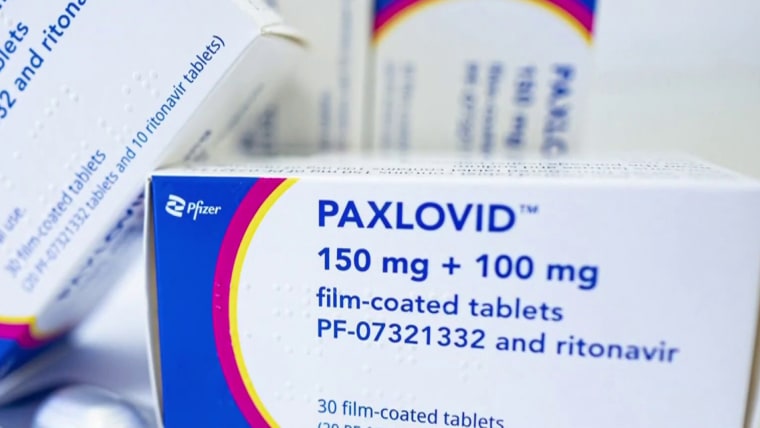When Dr. Anthony Fauci got Covid in June, he took Paxlovid, an antiviral drug for people with mild to moderate symptoms whose ages or immune statuses put them at high risk for severe disease. The treatment consists of three pills taken twice daily for five days.
Fauci finished the treatment and tested negative for Covid. But about three days later, a test came back positive again. His symptoms — runny nose, sore throat and fever — resurfaced, too.
A small minority of people who take Paxlovid see a similar rebound effect.
“When you look at the studies, it generally does not occur very often,” Fauci, who directs the National Institute of Allergy and Infectious Diseases and is President Joe Biden’s chief medical adviser, said Tuesday on MSNBC’s “Morning Joe.” But he noted that there have been “anecdotal cases” that suggest rebounds are more common now than they were in clinical trials.
Around 1% to 2% of people taking Paxlovid in Pfizer’s clinical trial tested positive for the coronavirus after having tested negative. Rebound rates are around 5% among the tens of thousands of people who’ve taken the drug in real-life settings, the White House Covid response coordinator, Dr. Ashish Jha, said at a news conference last week.
“If you look at Twitter, it feels like everybody has rebound,” Jha said. “But it turns out there’s actually clinical data.”
A small study in June found that less than 1% of Covid patients had their symptoms rebound around nine days, on average, after they took Paxlovid. In a larger study of 13,600 Covid patients, which hasn’t been peer-reviewed, 6% had their symptoms rebound in the month following the treatment.
Dr. Aditya Shah, an infectious disease specialist at the Mayo Clinic who led the small study, said it’s difficult for people to self-diagnose rebound cases. Ideally, people would have proof that they tested positive, then negative, then positive again, he said.
The real number of rebound cases “could be as high as 5 to 10%, but I don’t think it is as common as the general community is making it out to be,” Shah said.
The Centers for Disease Control and Prevention said in May that symptoms usually rebound two to eight days after Paxlovid is stopped, if they come back at all.
People who continue to test positive may still be contagious, so the CDC recommends that people restart isolation for at least five days if their illness returns.
The treatment may not be long enough
Some disease experts suspect the Paxlovid regimen is too…
Click Here to Read the Full Original Article at NBC News Top Stories…

